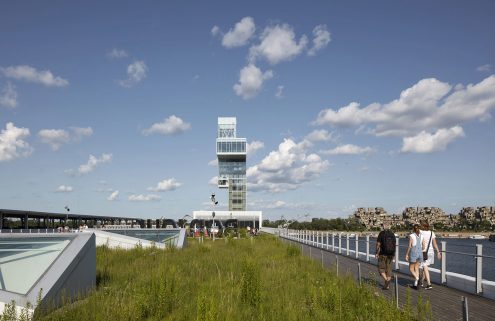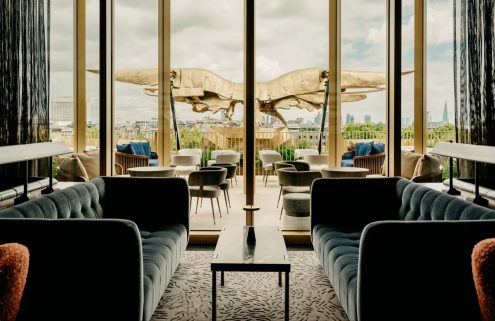Soaring 51 storeys up on the western fringe of London’s City cluster, a new office tower is taking the capital’s otherwise languishing commercial real estate market by storm.
In tough conditions, 8 Bishopsgate is demonstrating there is life in the UK offices sector yet. You just have to build somewhere people actually want to work.
As experts predict a 20% utilisation drop in London offices – their emptiest level since 1993 – Stanhope’s 204-metre tall tower already has over 40% of space filled, with another 40% under offer.

Photography: Dirk Lindner

Photography: Dirk Lindner

Photography: Dirk Lindner

Photography: Dirk Lindner

Photography: Dirk Lindner

Photography: Dirk Lindner

Photography: Dirk Lindner

Photography: Dirk Lindner

Photography: Dirk Lindner
It helps that the Wilkinson Eyre-designed building came to market in June with a number of accolades that resonated with occupiers looking to lure office-goers back. Not only is 8 Bishopsgate the City’s most sustainable speculative office tower it, is also London’s first mobile-only building.
With the sustainability credentials of workplaces playing a major role in determining occupancy success, the architect behind the project explains how those credentials were built into the design from the word go.
‘The site is assembled from what were two late sixties/early seventies buildings,’ says Wilkinson Eyre director Oliver Tyler. ‘We reused the basements, we reused a lot of the footings. The dark glass we have used is 40% insulated. We haven’t put ceilings all the way through but have used a series of rafts. We have taken out a lot of the lining materials that we would usually use.’
The use of foundation materials throughout has reduced embodied and operational carbon, he adds, and the building boasts the highest solar panels in London.

The building is also tech-enabled to the core: access is strictly tap-in to elevate tenant experience and feed vital data around the building’s usage to drive efficiency.
Another major tenant-pleaser is the amenity space. A massive 75,000 sq ft of terraces, restaurants, cafes, lounges, a 200-seater auditorium and the knockout 50th-floor viewing platform.
‘We wanted to make sure we had the right mix of amenities,’ says Kevin Darvishi, Stanhope’s leasing director. ‘What we are seeing is a flight to quality. People can use a great office to retain their best staff and recruit better staff.’
Finally, it would be remiss not to mention the design details when considering the reasons for the commercial success of 8 Bishopsgate. Tyler’s gentle palette, punctuated by natural timber and stone and what he calls ‘generosity with the space’, has created a sanctuary in the heart of one of London’s busiest districts.

The entrance to 8 Bishopsgate is a showstopper. The ground floor café, visible from the street, draws the eye into a space that looks more like a concert hall than an office. He has pulled light into the lift lobbies and staircases to encourage use and make them ‘joyful places to be.’
This strategy is then emulated through the building, which only gets lighter and brighter the higher you climb.
If we are looking for buildings to showcase how to bring staff back into the office – willingly and happily – 8 Bishopsgate is a prime example of how it can be done.
























